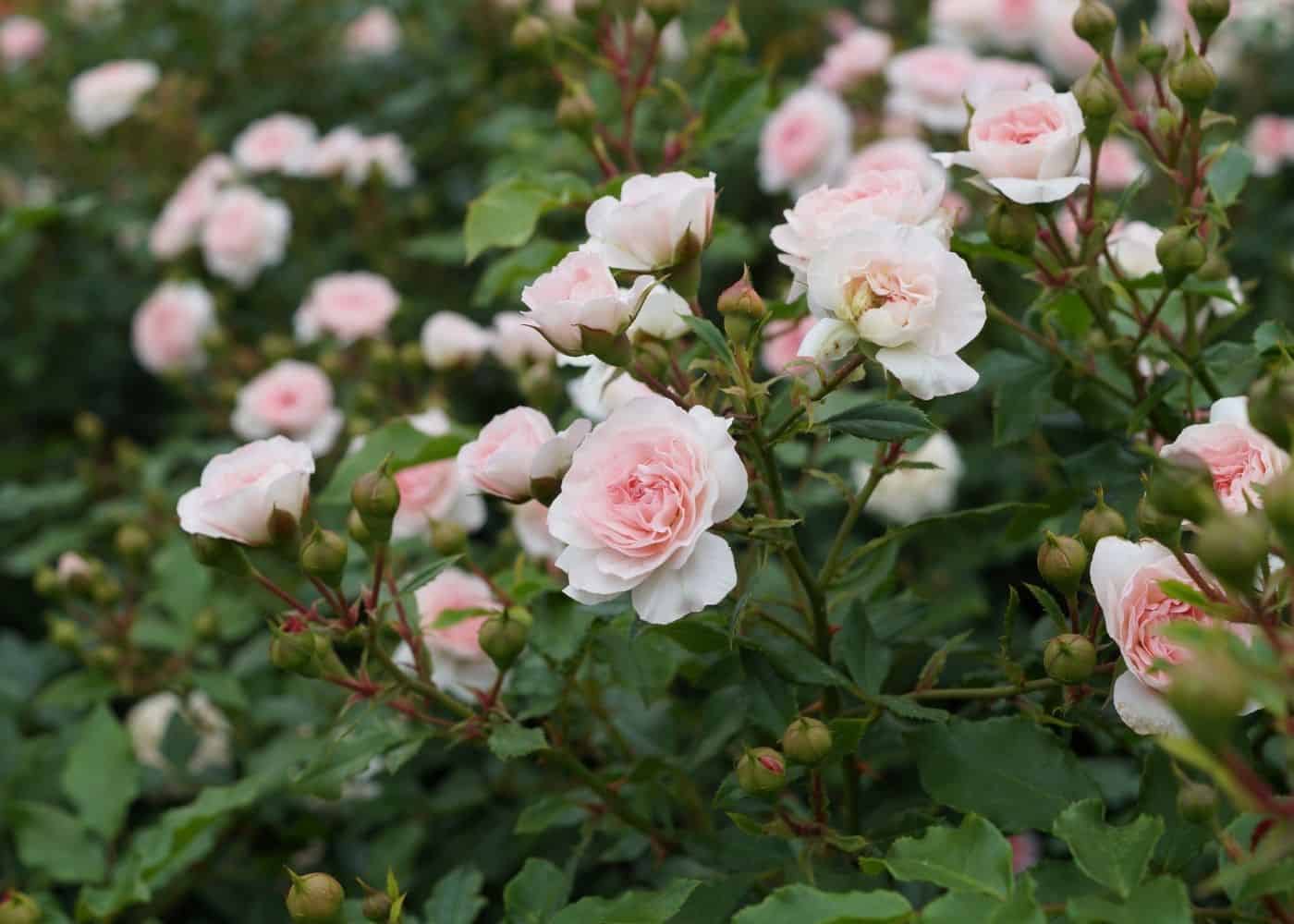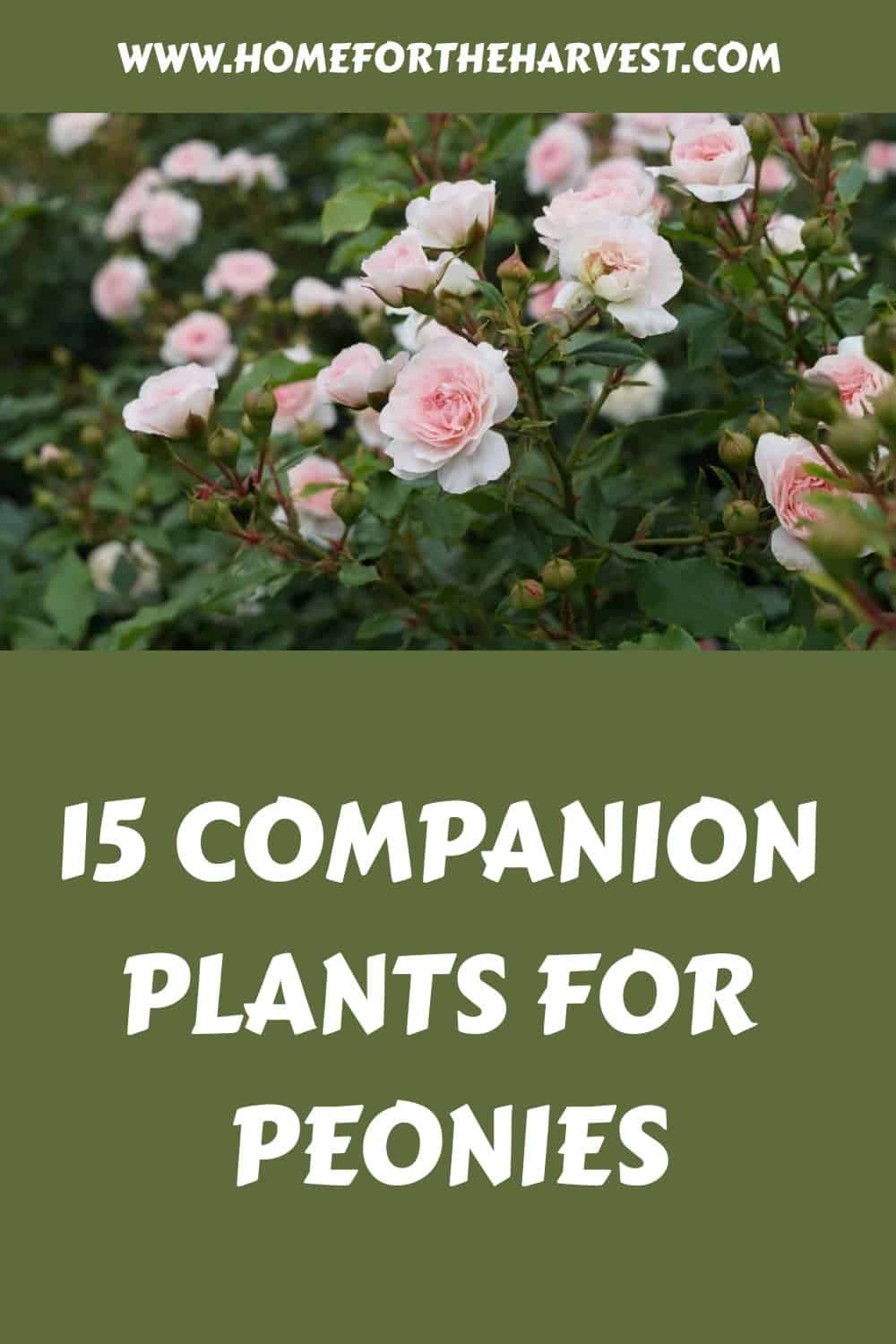Here are some of the best companion plants for peonies!
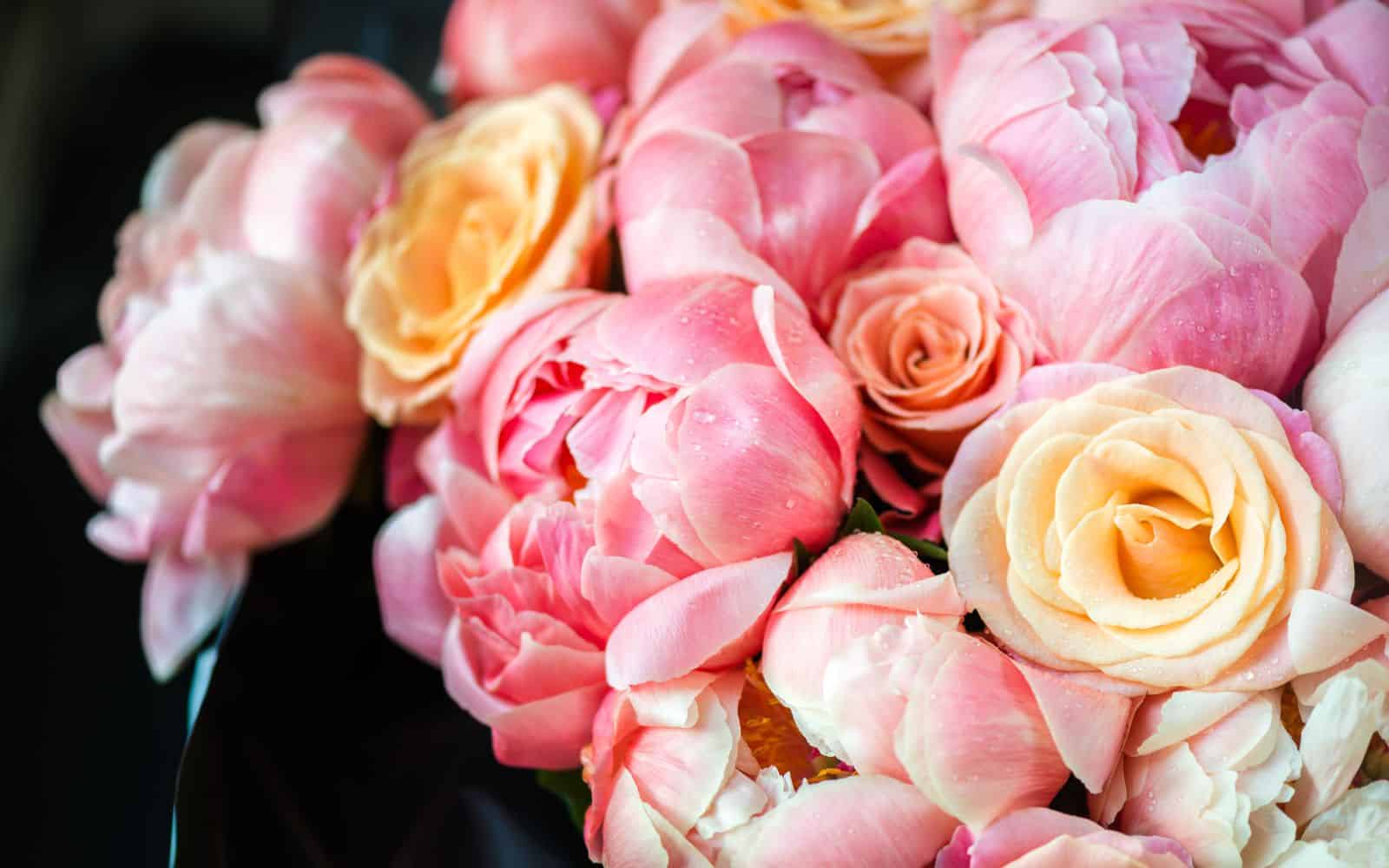
1. Roses
Roses come in almost any color you can imagine and are one of the most popular flowers in the world. The many varieties of roses available range in size, making them perfect as a companion to peonies growing in the garden. From classic white rose varieties to bold red roses and soft pink varieties, there’s a rose for every garden.
These classic garden plants make wonderful companions to peony flowers. Almost all garden roses flower after peonies, so planting them together will create an extended blooming area in the garden. They can also generally share an irrigation system (typically drip line).
Rose plants thrive in the same garden conditions as peonies. Typically this is a full sun planting location with well-drained soil and infrequent but deep watering. While some may argue that roses are difficult to grow, they aren’t complex when grown freely in a garden. You may need to trim their stems occasionally, but that’s about it.
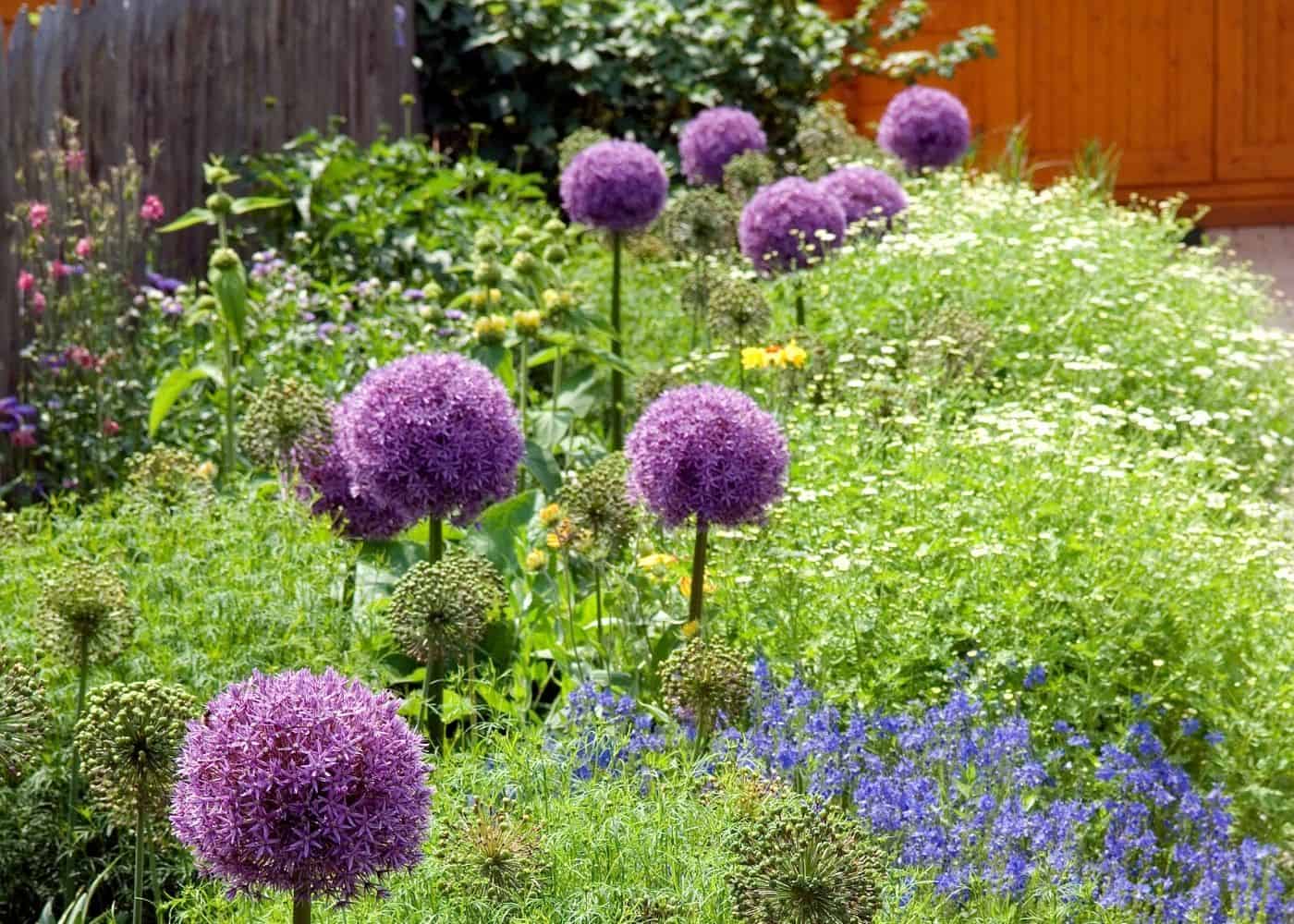
2. Alliums
Alliums are round purple flowers in the onion family that bloom in the spring or early summer. The spherical head of the flower is made of tiny, individual florets. Not only do the flower clusters look great alongside peonies, but they also have an onion-like smell that helps to repel pest insects and animals. A garden bed of peonies and allium would be almost deer-proof!
Some allium variations are more oval or cascading in shape. They come in a variety of colors, with purple, white, pink, blue, and yellow flowers all available. The height of these beautiful flowers varies from 5″ to 4′ tall, depending on the variety. Here are some giant alliums to consider.
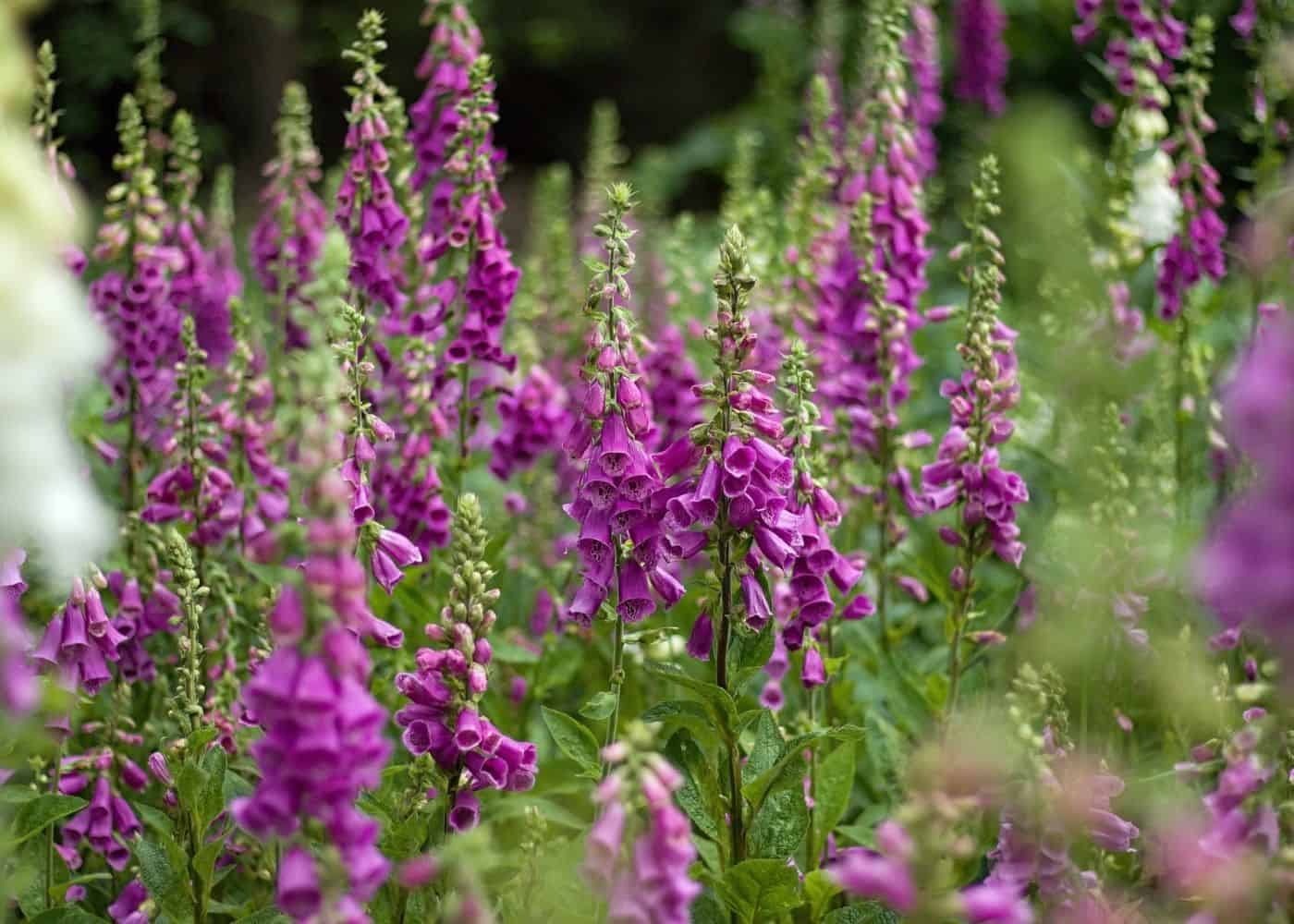
3. Foxgloves
Foxgloves are a nice cottage garden plant that can be placed as a great backdrop for the garden behind your peonies. These cone-shaped flowers droop down when in full bloom. They are usually purple or light pink in color. The inside of the flowers is speckled with small dark spots. In the spring and summer, you may see bumblebees climbing inside in search of pollen.
While they’re all lovely, I like to grow the Excelsior mix, which is rather tall. While they are a lovely combination for peonies, they like their space. So choose this flower only if you are able to keep them behind your peonies rather than competing for sunlight and soil nutrients. Here’s a guide all about caring for foxglove plants.

4. Hydrangeas
Hydrangeas are one of my favorite flowers. They smell amazing and are extremely full when in full bloom. They come in a variety of colors, including but not limited to white, purple, pink, and soft blue. Some varieties can even change color (here’s a hydrangea color chart to check out).
Once established, they are extremely easy to maintain, but regular watering doesn’t hurt. Plant them beside peonies for a beautiful pastel garden that starts with the peony flowers blossoming in the spring and then bursts with hydrangea clusters in early summer.
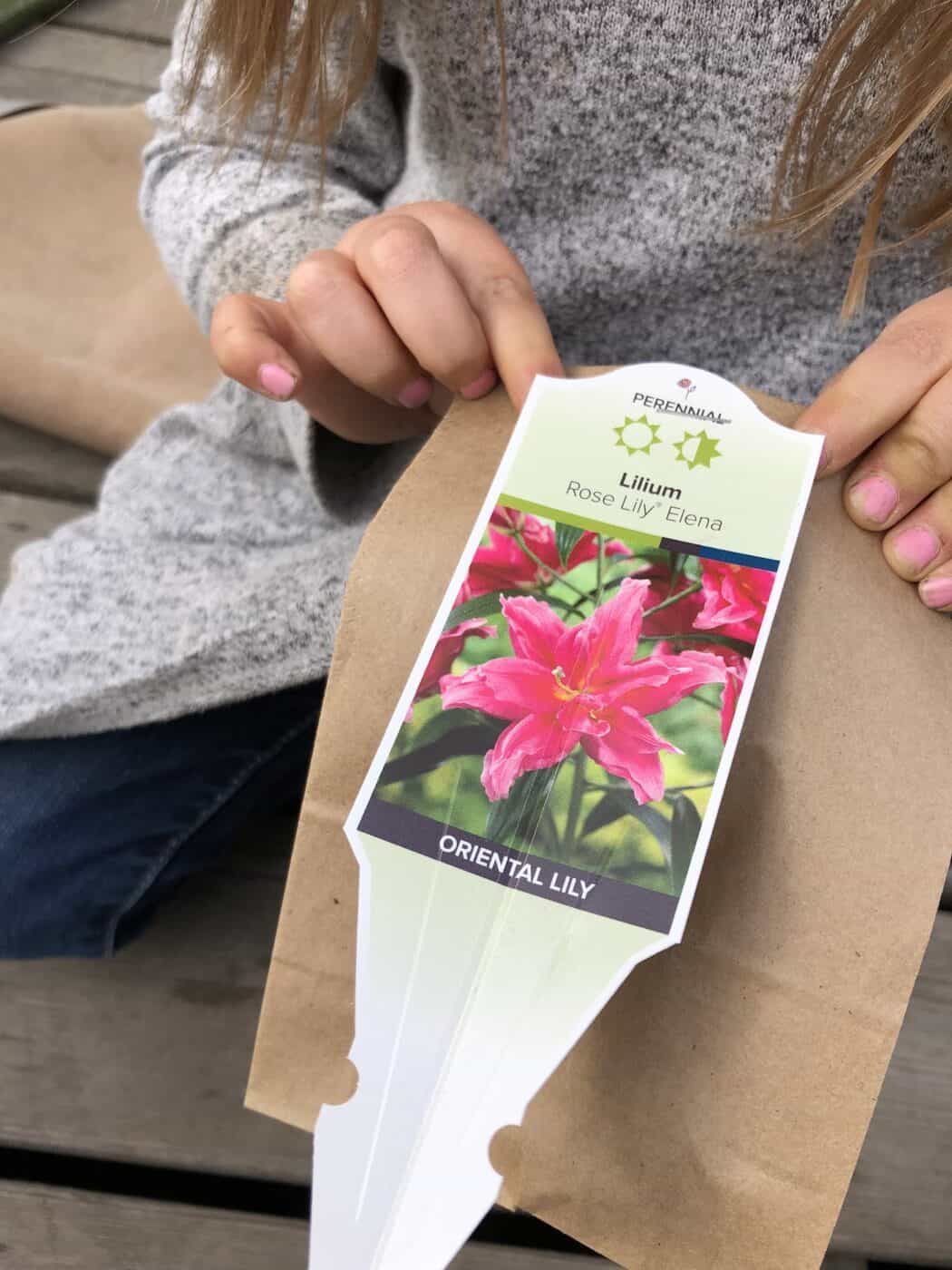
5. Lilies
Lilies are a popular companion plant for peonies. Taller than peonies, most lilies should be planted behind peonies (unless they are very short carpet lilies). They bloom after peonies and will keep the flower show going in the garden after the peonies fade. And the other nice thing about both peonies and lilies is that they’re usually very easy to grow.
One of the most popular varieties to grow is the pink Stargazer lily. But there are many different types of lilies to choose from, including tiger lilies, Canada lilies, martagon lilies, Madonna lilies, and Easter lilies.
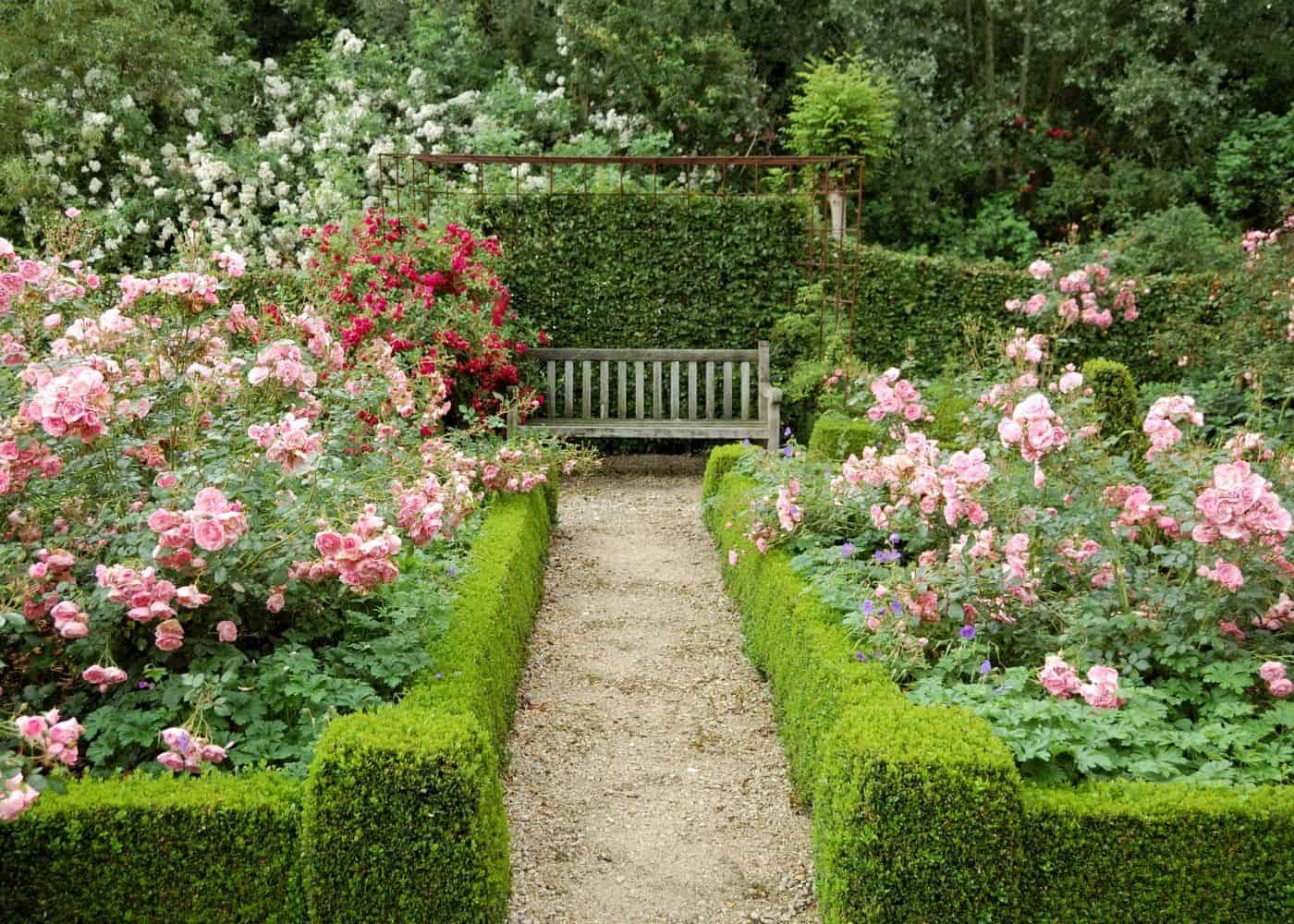
6. Boxwood
Boxwood is a broadleaf evergreen shrub commonly used as a low hedging plant in front of peonies and other flowers. Small boxwoods (like Japanese boxwood) are typically trimmed to 12″-18″ tall to hedge in peonies and create a clean finished look in the garden. The boxwoods also hide any peony supports required for heavier-flowered varieties.
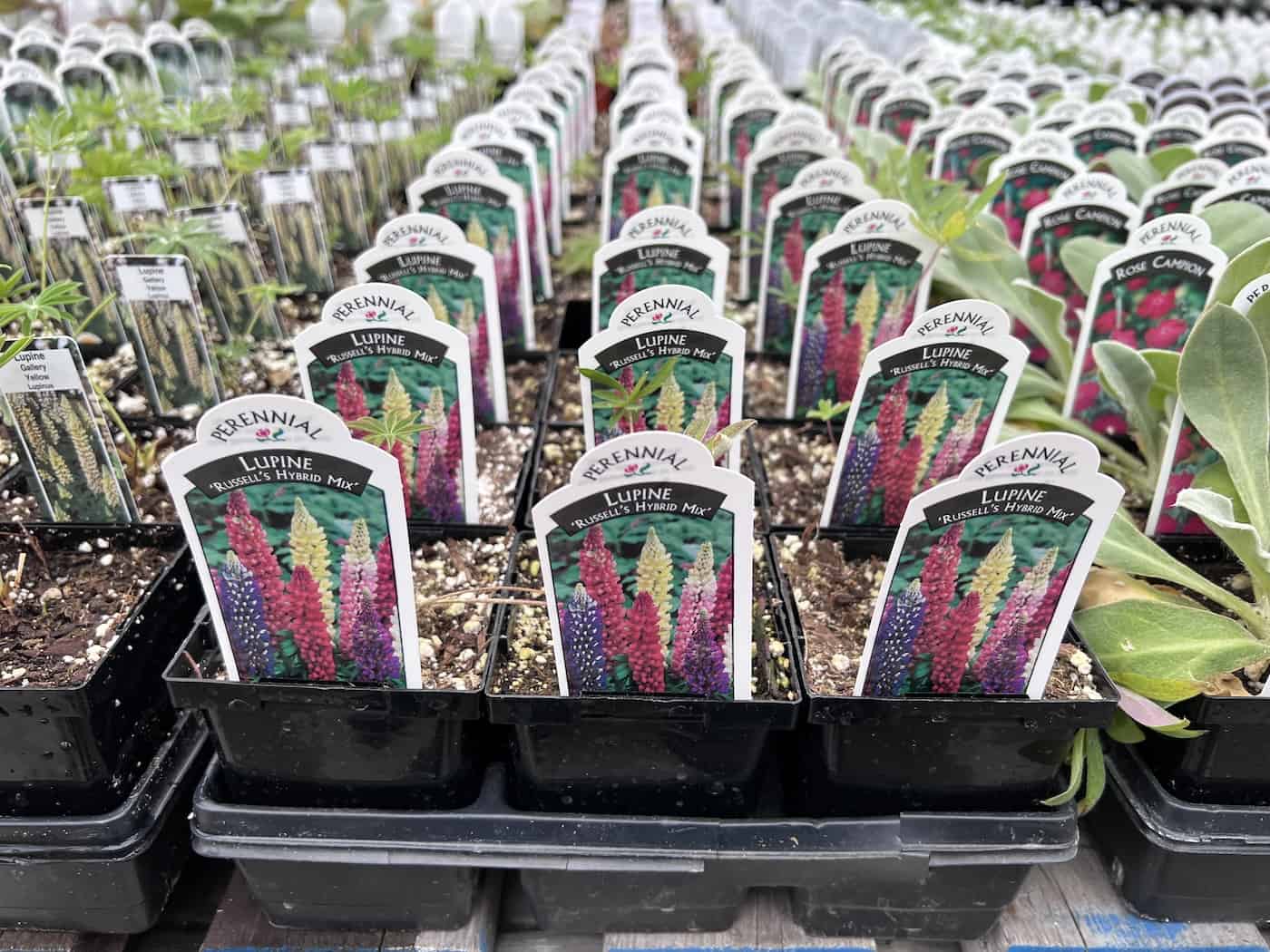
7. Lupin
Lupins are flowering plants in the legume family with beautiful spikes of blooms that attract pollinators while drawing nitrogen out of the air and into the soil, making this important nutrient available to nearby plants.
Lupins are usually pink, purple, or cream in color, and there are lots of different choices to match the color scheme of your peonies. Lupins tend to be taller than peonies and are usually planted behind them.
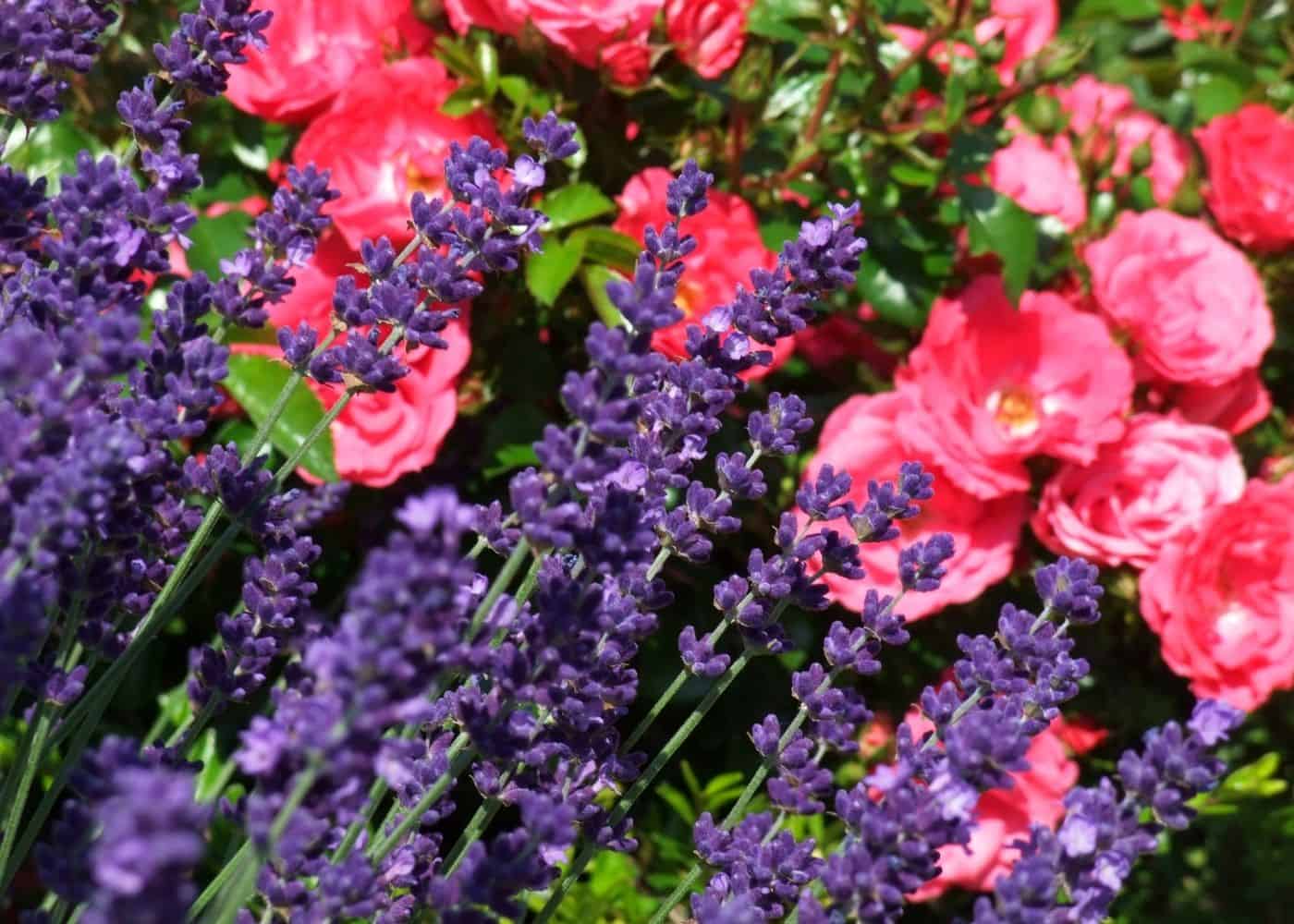
8. Lavender
Lavender is a wonderful companion plant for peonies. Smaller lavender varieties can be used to hedge in peonies by planting the lavender in front, while larger cultivars (like Grosso) can be interplanted or planted behind the peonies.
These dainty, slender flowers have a fuzzy texture. Most are purple, but there are also white varieties to choose from. The petals are very small once they bloom and they grow upright. They have a very unique smell and are often used for their oil. Lavender is also one of the best plants that doesn’t require much water, even in direct sunlight.

9. Columbines
Columbines are a classic perennial flower that is easy to maintain. They come in a variety of colors, with a small cluster of yellow buds in the center. The outer layer of their petal contrasts with the inner layer very nicely. They are typically two shades of the same color (such as a light pink on a dark pink). They have an airy, elegant look which can contrast nicely with the heavier ball-type peonies.
Planting this beautiful flower alongside your peonies will also attract hummingbirds and pollinating insects. Different columbine varieties have different heights, so be sure to compare the expected flowering height to the flowering height of your peonies.
10. Bearded irises
Bearded iris plants typically come in shades of pink, red, yellow, blue, purple, and orange. They are described as frilly, and their outermost petals droop down, making it look like they have a beard. They also have three petals that stand up.
Bearded irises are one of the easiest perennials to grow in your garden. And there are SO many varieties. They make the perfect complement to most peonies. And once the flowers have bloomed (and the iris stems have been cut back), the architectural leaves provide a rich green contrast to the glossy foliage of the peonies.
11. Siberian Irises
Just like the bearded iris plants, Siberian iris plants have an ombre coloring that makes them lovely to look at. This clump-forming perennial flower makes a good companion for peony plants. They tend to bloom in late spring or early summer and grow up to 4 feet tall.
Siberian Irises prefer full sun or partial shade. They are easy to maintain and are resistant to deer and rabbits.
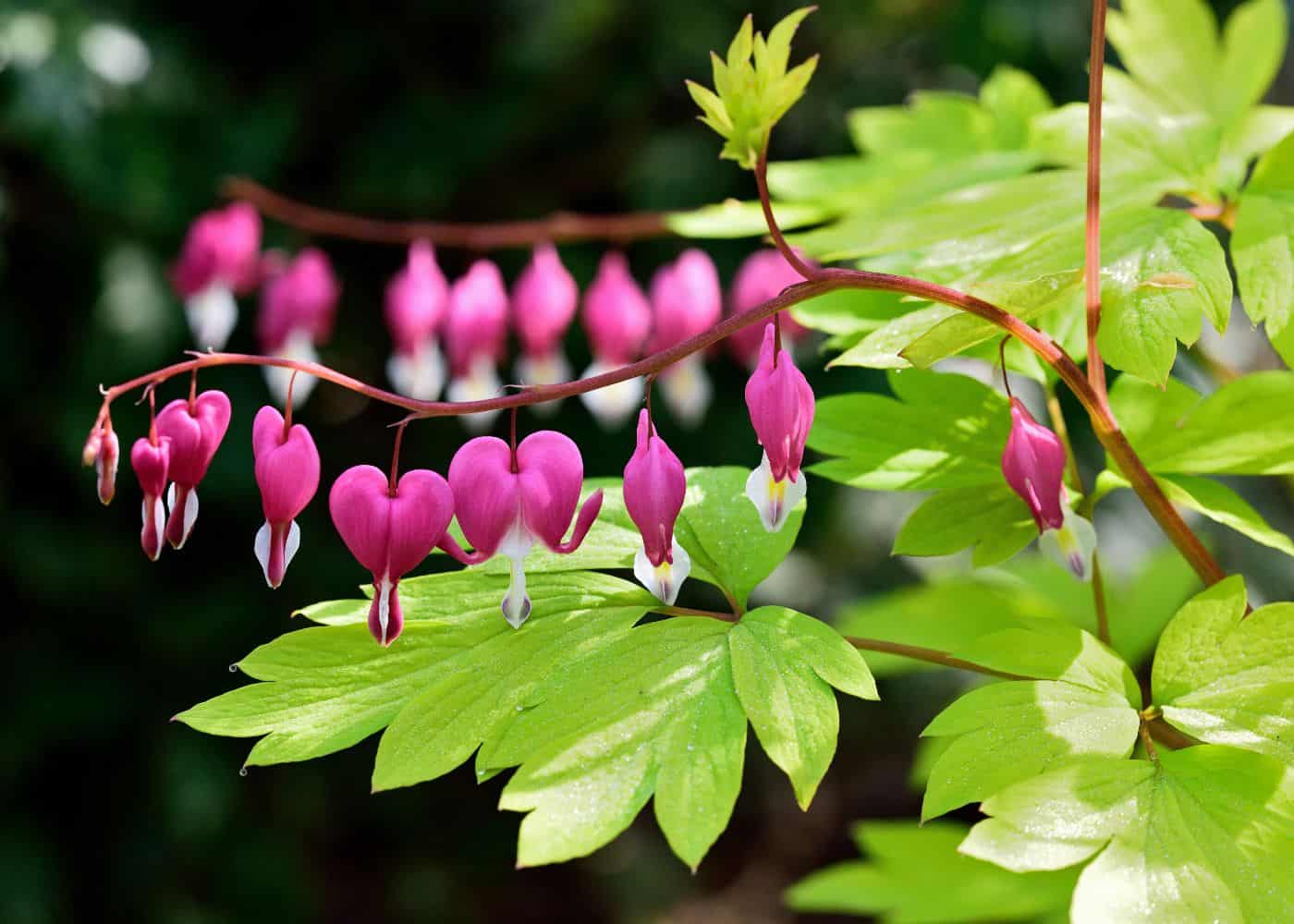
12. Bleeding hearts
The bleeding heart is a truly magical flower. The stems of the flower cascade downward with heart-shaped petals hanging from them. They are typically pink (perfectly fitting for a heart-shaped flower). They are extremely hardy flowers and deer-resistant. These wildflowers make lovely companions to the peony blossoms but are toxic to humans and animals.
13. Daffodils
Daffodils have a cone-like petal sticking straight out, surrounded by six petals that remind me of the sun. Their 3-dimensional shape gives it a lovely appeal. The yellow coloring of these flowers gives any garden a beautiful pop of color.
They pair nicely with peonies and don’t require much maintenance at all besides what the sun and rain provide. Just be sure your area isn’t too humid, as they don’t enjoy that as much.
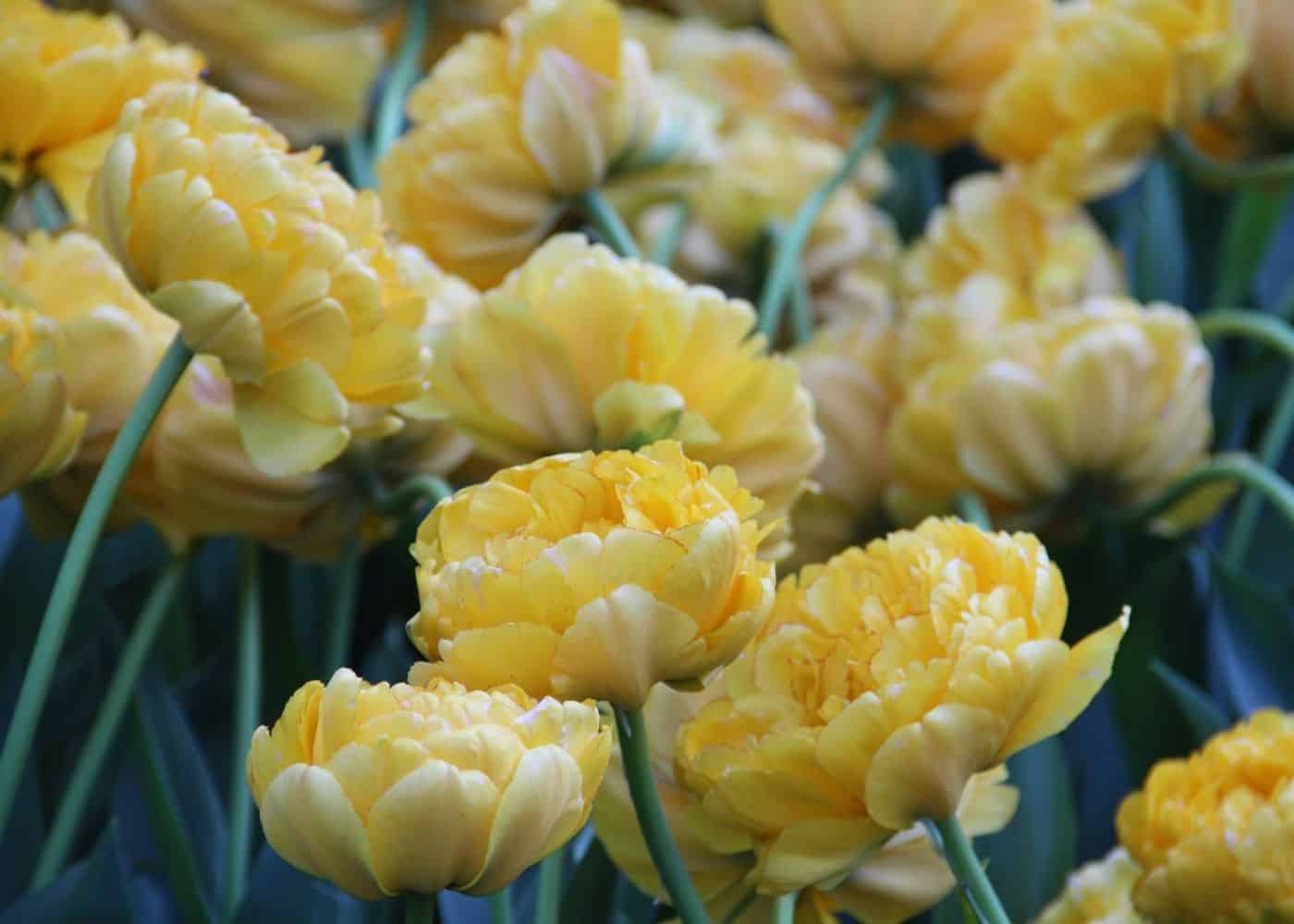
14. Tulips
Tulips are a popular spring-flowering bulb to plant with peonies. Tulips flower in early-mid spring, completing their blooming season before peonies start to bloom. The peony foliage also does a good job of camouflaging the yellowing tulip foliage left after they bloom.
15. Clematis
Clematis is a stunning flowering vine that pairs well with peonies. Use clematis as a companion plant for peonies planted alongside a wall. Attach a trellis for the clematis to help the foliage grow up and reach the sunlight. The peony foliage will shade the base of the clematis, helping it stay healthy during the hottest days of late summer. herbaceous peonies herbaceous peonies gardening tips


